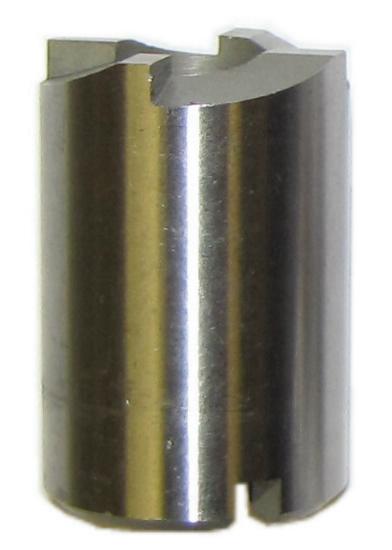Unlike V-engines, radials seem to have adopted a consistent cylinder numbering system. Double-row radial engine cylinders are numbered clockwise when viewed from the rear of the engine. Cylinder number 1 is at the top of the rear row. Cylinder number 2 is the first one clockwise from number 1, but it is located in the front row. Cylinder number 3 is the next one clockwise from number 2, but it is located in the rear row. All odd-numbered cylinders are located in the rear row, and all even-numbered cylinders are located in the front row. Cylinder number 10 is at the bottom of the front row.
In a radial engine the firing order follows a pattern that allows the firing impulses to continually follow the motion of the crank during its rotation. In a double-row radial engine, the firing order is a bit complicated. The firing order is such that a firing impulse occurring in a cylinder in one row is never immediately followed by a firing impulse occurring in a cylinder of the same row.
An easy technique for figuring the firing order of an 18-cylinder, double-row radial engine is to start with any number from 1 to 18, and then either add 11 or subtract 7 (in radial parlance these are called the firing order numbers), depending upon which gives an answer between 1 and 18. For example, beginning with cylinder 1, add 11 to get a result of 12. Then, because 11 cannot be added to 12 since the total would be greater than 18, subtract 7 to get a result of 5. Add 11 to 5 to get 16. Subtract 7 from 16 to get 9. Subtract 7 from 9 and the result is 2. Add 11 to 2 and the result is 13, and then continue this process for 18 cylinders. The resulting firing order is [1]-12-5-16-9-2-13-6-17-[10]-3-14-7-18-11-4-15-8. One cylinder fires every 40 degrees of crankshaft rotation.
The cams are timed to the crankshaft by focusing on the TDC events of the two cylinders containing the master rods i.e. cylinder 1 for the rear cam and cylinder 10 for the front cam. Even though these two cylinders oppose one other, their also opposing crank pin throws mean their pistons will reach TDC at exactly the same time.
In a four stroke engine each piston hits TDC twice within its 4-stroke cycle: once during the transition from its exhaust stroke to its intake stroke, and once during firing - the transition from its compression stroke to its power stroke. After the cams have been properly timed, the TDC's of cylinders 1 and 10 will occur on opposite halves of the 4-stroke cycle. That is, while cylinder 1 is transitioning from exhaust to intake, cylinder 10 will be firing.
However, to simplify the timing process, each cam will actually be timed using the TDC in the first half of the 4-stroke cycle. In this first half cycle, where the exhaust stroke is transitioning to the intake stroke, the flanks of the cam's lobes are adjacent, and the center between them is easily determined. After the rear cam has been timed, though, the crankshaft must be rotated 360 degrees before applying the same timing process to the front cam. This is necessary so that, after timing, cylinders 1 and 10 wind up on opposite halves of the engine's 4-stroke cycle as required by the engine's firing order.
The rear cam was timed first. A rear row head/cylinder assembly was temporarily installed on the crankcase in position number 1. A spare H-9 piston without rings was temporarily installed on the master rod, and a pair of tappets were inserted into the tappet bushings for this cylinder. A shop-made adapter was threaded into the spark plug hole of the cylinder so a dial indicator resting against the piston crown could indicate TDC. Two additional dial indicators were set up on the tappets and zeroed out while the tappets were resting on the base of the cam ring.
With the piston at TDC and the jackshaft temporarily removed, the cam ring was manually rotated until it was centered between the exhaust closing event and the intake opening event as determined by the dial indicators on the tappets. The resolution of the gear train is actually fairly coarse, but the teeth of the two gears on the jackshaft are randomly aligned. And so, with patience, a position can usually be found that maintains the center between the lobes within a few degrees after the jackshaft is re-inserted. After being satisfied with the result, the o-ringed rear seal plate was then installed followed by the impeller.
A degree wheel was installed on the crankshaft, and the timing of the valve events was measured at a .010" tappet lift. The intake and exhaust durations were measured at 208 and 235 degrees, respectively. The intake lobe center was located at 107 degrees ATDC and the exhaust lobe center at 114 degrees BTDC. The cams in this engine are very mild, with an almost negligible 5 degrees of overlap 'near' TDC.
After rotating the crankshaft 360 degrees, a similar process was followed for the front cam assembly using cylinder number 10. After completion, the front cover was installed.
The next step is to install the head/cylinder assemblies as well as the intake/exhaust tube pairs. Terry

























![DreamPlan Home Design and Landscaping Software Free for Windows [PC Download]](https://m.media-amazon.com/images/I/51kvZH2dVLL._SL500_.jpg)



























